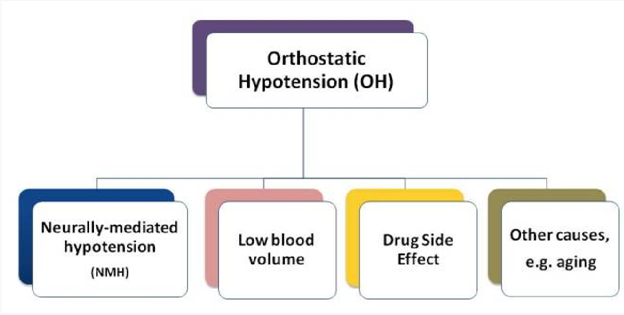The nurse is conducting client teaching about cholesterol levels. When discussing the client's elevated LDL and lowered HDL levels, the client shows an understanding of the significance of these levels by making what statement?
"Increased LDL and decreased HDL increase my risk of coronary artery disease."
"Increased LDL has the potential to decrease my risk of heart disease."
"The decreased HDL level will increase the amount of cholesterol moved away from the artery walls."
"The increased LDL will decrease the amount of cholesterol deposited on the artery walls."
The Correct Answer is A
Elevated levels of LDL (low-density lipoprotein) cholesterol are associated with an increased risk of coronary artery disease (CAD). LDL cholesterol is often referred to as "bad" cholesterol because it can contribute to the formation of plaque in the arteries, leading to narrowing and blockage of the arteries supplying the heart. This increases the risk of developing CAD and related complications such as heart attack and stroke.
On the other hand, HDL (high-density lipoprotein) cholesterol is often referred to as "good" cholesterol. HDL cholesterol helps remove excess cholesterol from the bloodstream and transport it back to the liver for processing and excretion. Higher levels of HDL cholesterol are associated with a decreased risk of CAD because it helps to prevent the accumulation of cholesterol on artery walls.
Therefore, understanding that increased LDL and decreased HDL levels increase the risk of coronary artery disease demonstrates a good understanding of the significance of cholesterol levels and their impact on cardiovascular health.
Nursing Test Bank
Naxlex Comprehensive Predictor Exams
Related Questions
Correct Answer is D
Explanation
Hypertension, or high blood pressure, is often referred to as the "silent killer" because it typically does not cause noticeable symptoms until it has already caused damage to target organs such as the heart, blood vessels, kidneys, or brain. It is crucial for the client to understand that even if they do not experience symptoms, untreated or poorly controlled hypertension can lead to serious complications, including heart disease, stroke, kidney problems, and more.
While dietary changes and increasing physical activity are important lifestyle modifications for managing hypertension, it is not accurate to state that most people can control their blood pressure through these measures alone. Hypertension is a complex condition influenced by multiple factors, and many individuals require additional interventions, such as medication, to effectively manage their blood pressure.
Annual blood pressure checks are indeed important to monitor the effectiveness of treatment and ensure that blood pressure remains within the target range. However, this information is secondary to the understanding that hypertension is typically asymptomatic until target organ damage occurs.
Recognizing the potential risks associated with untreated or uncontrolled hypertension can motivate the client to adhere to their treatment plan and make necessary lifestyle changes.
Correct Answer is A
Explanation
The information that the nurse should include in the teaching plan for a client with hypertension who is on alpha blockers and at risk for postural hypotension is: Change positions slowly.
Alpha blockers are a class of medications commonly prescribed for hypertension. One potential side effect of alpha blockers is postural hypotension, which is a sudden drop in blood pressure when changing positions, such as from sitting to standing. To minimize the risk of postural hypotension, it is important for the client to change positions slowly. The nurse should advise the client to take their time when transitioning from lying down, sitting, or standing, allowing their body to adjust and stabilize their blood pressure.

The other options are not appropriate or helpful in managing postural hypotension:
Check blood pressure every day for signs of rebound hypertension: Rebound hypertension refers to a sudden increase in blood pressure that can occur when discontinuing certain antihypertensive medications. It is not directly related to postural hypotension. Regular blood pressure monitoring is important for managing hypertension, but it is not specifically related to postural hypotension or alpha blockers.
Do not become dependent on canes, walkers, or handrails: Assistive devices like canes, walkers, or handrails can provide support and stability for individuals who experience balance issues or are at risk of falls. It is not necessary to discourage their use unless there are specific contraindications or safety concerns.
Eat plenty of salty food to prevent hypotension: Increasing salt intake is generally not recommended for individuals with hypertension or those at risk of postural hypotension. A high-sodium diet can contribute to elevated blood pressure and is generally discouraged. The nurse should instead encourage a balanced diet that includes appropriate sodium intake based on the client's healthcare provider's recommendations.
Whether you are a student looking to ace your exams or a practicing nurse seeking to enhance your expertise , our nursing education contents will empower you with the confidence and competence to make a difference in the lives of patients and become a respected leader in the healthcare field.
Visit Naxlex, invest in your future and unlock endless possibilities with our unparalleled nursing education contents today
Report Wrong Answer on the Current Question
Do you disagree with the answer? If yes, what is your expected answer? Explain.
Kindly be descriptive with the issue you are facing.
